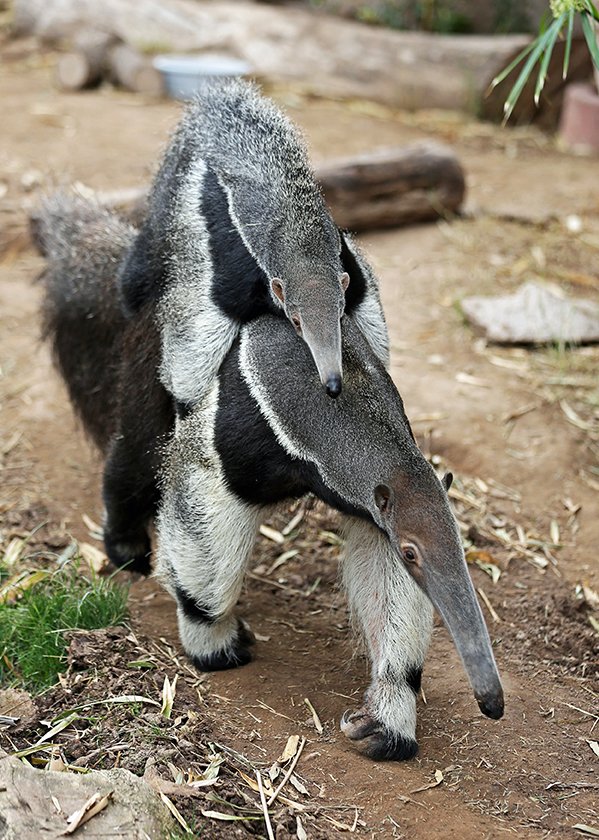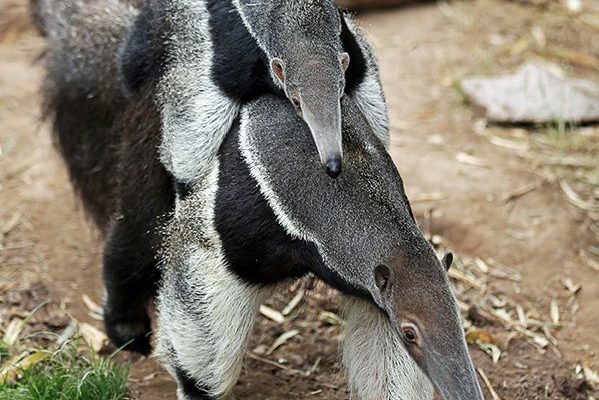
You might be wondering, “Why should I care about this animal’s backstory?” Well, every creature around us has a unique path that helps explain why it looks and behaves the way it does. The giant anteater’s evolutionary history is a tale of survival, adaptation, and ecological importance, providing a valuable window into the processes that shape life on Earth. Let’s dig into this story together.
Origins: Where It All Began
The story of the giant anteater begins in the late Paleocene epoch, around 60 million years ago. The ancestors of today’s giant anteater belong to a group called the Pilosa, which also includes sloths. These early creatures were much smaller and lived in diverse habitats ranging from forests to grasslands.
Around 20 million years ago, as the Earth’s climate changed, so did the habitats where these ancestors lived. As forests receded and grasslands expanded, the anteater evolved characteristics that suited this new environment. Its long snout, perfect for reaching into tight spaces, and a sticky tongue allowed it to feast on ants and termites, making it a specialized insectivore.
While the giant anteater belongs to its own family, Myrmecophagidae, it shares an ancient lineage with other creatures that once roamed the same lands. Imagine a family tree where branches spread wide, with some relatives evolving into different forms—like echidnas and aardvarks—while the anteater remained true to its roots.
Physical Adaptations Over Time
As the giant anteater evolved, it developed several physical adaptations that make it uniquely equipped to thrive in its environment. One of the most striking features is its elongated snout, which allows it to reach deep into ant mounds. Picture it like a long, flexible straw—perfect for slurping up small critters.
Another fascinating adaptation is its strong forelimbs, equipped with sharp claws. These claws are not just for climbing; they’re essential for tearing open ant mounds or termite hills. When faced with a challenge, the anteater can crack open a mound like a farmer harvesting a field. This method of feeding showcases a skill set finely tuned to its ecological niche.
Additionally, the giant anteater’s thick fur provides protection from insect bites and helps regulate body temperature in its tropical habitat. It’s almost like wearing a coat that’s been specifically designed for comfort in its bustling environment. These adaptations tell us a story of a creature that has perfectly balanced itself with its surroundings over millions of years.
Migration Patterns: A Global Journey
The migration of the giant anteater is another intriguing aspect of its evolutionary history. Originally found in North America, the anteater’s range expanded southward as it adapted to various climates and landscapes. The formation of the Isthmus of Panama, around 3 million years ago, created a land bridge that allowed many animals to traverse from North to South America, including the giant anteater.
This movement allowed the anteater to spread across diverse habitats—from savannas to dense forests. As it migrated, it encountered different species and varying conditions. Here’s the thing: each new habitat required slight adjustments in behavior and diet, pushing the anteater to continue evolving.
Today, you can find these animals primarily in the tropical grasslands and savannas of South and Central America. This journey across continents showcases not just the resilience of the species but also the intricate web of connections between all life forms.
Ecological Role: The Anteater’s Place in Nature
Every species has a role to play in its ecosystem, and the giant anteater is no exception. By feeding on ants and termites, this animal helps to control insect populations, preventing any one species from becoming too dominant. It’s like a natural pest control system, maintaining balance in its environment.
Moreover, the giant anteater influences the growth of vegetation. As it digs into ant mounds, it aerates the soil, allowing for better water retention and promoting vegetation growth. Without this kind of natural activity, plant life could struggle to flourish. So, you can see that the giant anteater isn’t just a quirky creature—it’s a vital part of its ecosystem.
In some regions, the anteater’s presence is an indicator of a healthy environment. The decline or disappearance of this species can signal ecological issues. Honestly, it’s a reminder of how interconnected life on Earth can be—where the survival of one species affects many others.
Conservation: Challenges and Efforts
Despite its fascinating journey, the giant anteater faces significant challenges today. Habitat destruction due to agriculture, deforestation, and urbanization poses major threats. As humans continue to expand their footprint, the natural habitats where these creatures thrive are shrinking. It’s like trying to fit a puzzle into a space that’s getting smaller and smaller.
Conservation efforts are underway to protect the giant anteater and its habitat. Various organizations are working to create protected areas and promote eco-friendly agricultural practices that allow both humans and wildlife to coexist. You might even find local initiatives aimed at raising awareness about this one-of-a-kind animal and the importance of biodiversity.
Additionally, rehabilitation programs help treat injured anteaters and return them to the wild. These efforts highlight the importance of community involvement in wildlife conservation. By fostering a sense of responsibility, we can create a world where the giant anteater continues to roam free, contributing to both its ecosystem and our collective understanding of evolution.
The evolutionary history of the giant anteater is a captivating tale of adaptation, survival, and ecological balance. From its ancient ancestors to its current status as a unique species, every aspect of its journey tells us something about the natural world. The giant anteater not only captures our imagination with its quirky appearance but also connects us to the broader story of life on Earth.
As we learn more about these fascinating creatures, let’s remember our role in protecting them. By supporting conservation efforts and understanding the impact of our actions, we contribute to the ongoing story of the giant anteater and the ecosystems it inhabits. So, next time you think about this remarkable animal, remember that it’s not just a quirky part of nature—it’s a living testament to the effects of evolution and the importance of preserving our planet for future generations.

